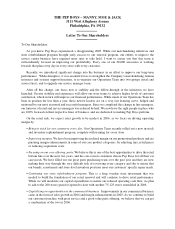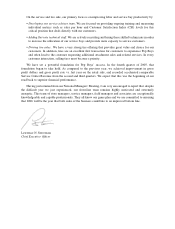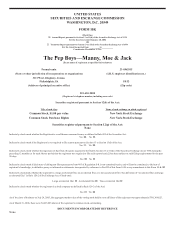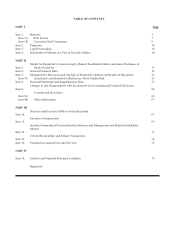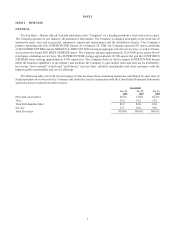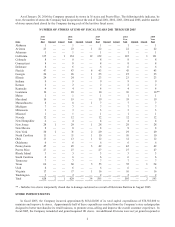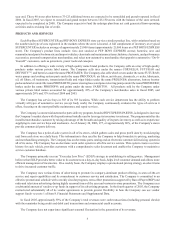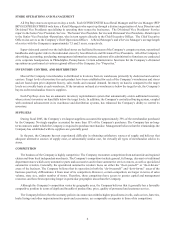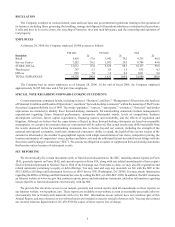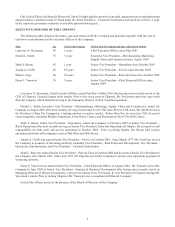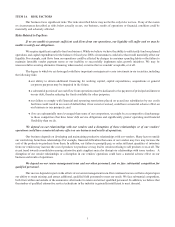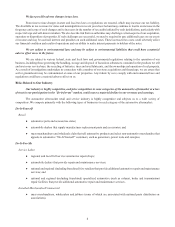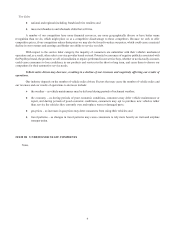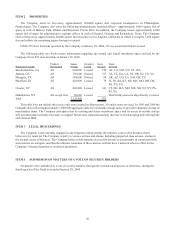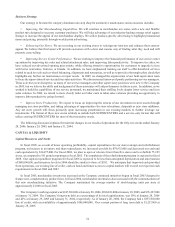Pep Boys 2005 Annual Report Download - page 12
Download and view the complete annual report
Please find page 12 of the 2005 Pep Boys annual report below. You can navigate through the pages in the report by either clicking on the pages listed below, or by using the keyword search tool below to find specific information within the annual report.7
ITEM 1A RISK FACTORS
Our business faces significant risks. The risks described below may not be the only risks we face. If any of the events
or circumstances described as risks below actually occurs, our business, results of operations or financial condition could be
materially and adversely affected.
Risks Related to Pep Boys
If we are unable to generate sufficient cash flows from our operations, our liquidity will suffer and we may be
unable to satisfy our obligations.
We require significant capital to fund our business. While we believe we have the ability to sufficiently fund our planned
operations and capital expenditures for the balance of fiscal year 2006, circumstances could arise that would materially affect our
liquidity. For example, cash flows from our operations could be affected by changes in consumer spending habits or the failure to
maintain favorable vendor payment terms or our inability to successfully implement sales growth initiatives. We may be
unsuccessful in securing alternative financing when needed, on terms that we consider acceptable, or at all.
The degree to which we are leveraged could have important consequences to your investment in our securities, including
the following risks:
● our ability to obtain additional financing for working capital, capital expenditures, acquisitions or general
corporate purposes may be impaired in the future;
● a substantial portion of our cash flow from operations must be dedicated to the payment of principal and interest
on our debt, thereby reducing the funds available for other purposes;
● our failure to comply with financial and operating restrictions placed on us and our subsidiaries by our credit
facilities could result in an event of default that, if not cured or waived, could have a material adverse effect on
our business or our prospects; and
● if we are substantially more leveraged than some of our competitors, we might be at a competitive disadvantage
to those competitors that have lower debt service obligations and significantly greater operating and financial
flexibility than we do.
We depend on our relationships with our vendors and a disruption of these relationships or of our vendors'
operations could have a material adverse effect on our business and results of operations.
Our business depends on developing and maintaining productive relationships with our vendors. Many factors outside
our control may harm these relationships. For example, financial difficulties that some of our vendors may face may increase the
cost of the products we purchase from them. In addition, our failure to promptly pay, or order sufficient quantities of inventory
from our vendors may increase the cost of products we purchase or may lead to vendors refusing to sell products to us at all. The
recent trend towards consolidation among automotive parts suppliers may also disrupt our relationships with some vendors. A
disruption of our vendor relationships or a disruption in our vendors' operations could have a material adverse effect on our
business and results of operations.
We depend on our senior management team and our other personnel, and we face substantial competition for
qualified personnel.
Our success depends in part on the efforts of our senior management team. Our continued success will also depend upon
our ability to retain existing, and attract additional, qualified field personnel to meet our needs. We face substantial competition,
both from within and outside of the automotive aftermarket to retain and attract qualified personnel. In addition, we believe that
the number of qualified automotive service technicians in the industry is generally insufficient to meet demand.


